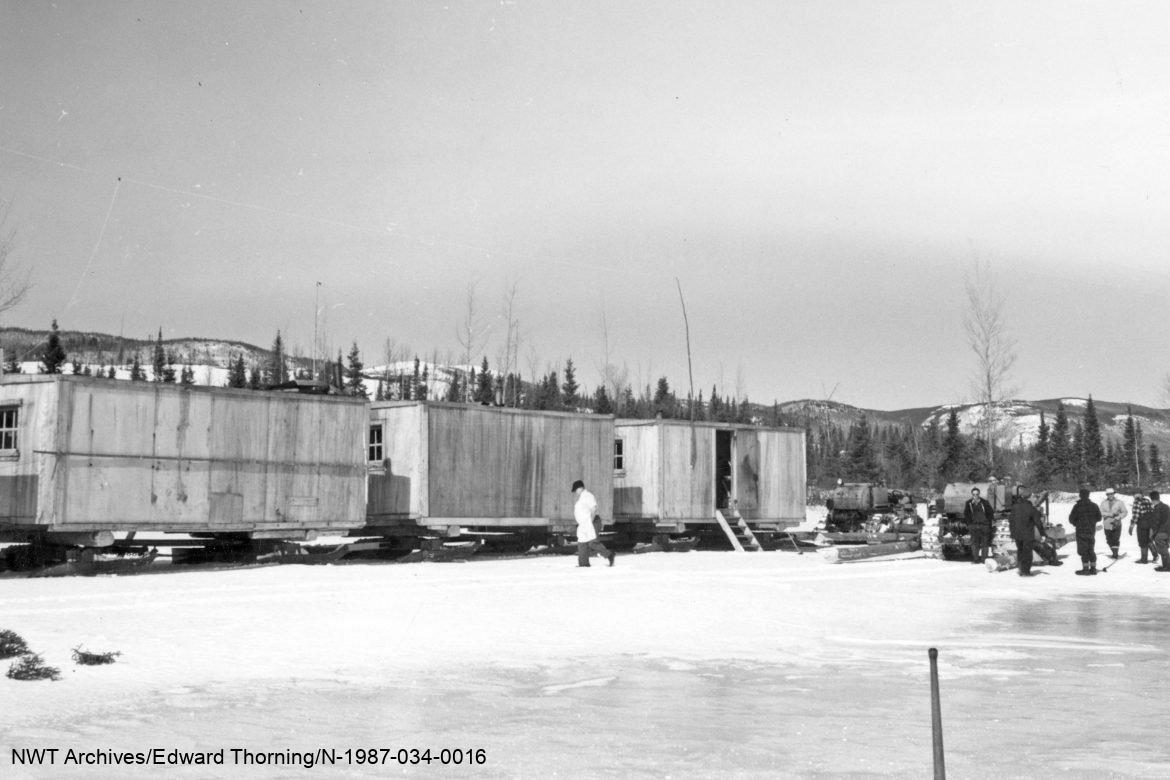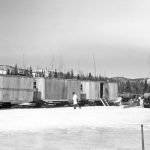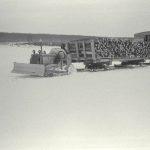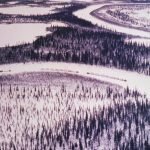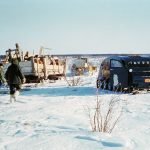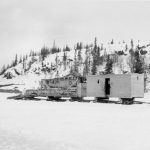1939
Northern Cat Trains
Each year tens of thousands of cars, trucks and recreational vehicles travel the Mackenzie Highway from Alberta into the Northwest Territories. Yet, few who travel this modern highway realize it began in the late 1930s as a ‘cat train’ trail.
For more than 150 years, freight transportation in and out of the North relied on boats travelling the Athabasca, Slave and Mackenzie Rivers. In the 1930s, with the discovery of radium on Great Bear Lake and then gold on Great Slave Lake, there was a need to transport heavy freight for the fledgling mining industry throughout the year.
Tracked tractors or, as they are more commonly known, Caterpillar tractors, developed in the early 1900s. By the 1930s, they had become solid and reliable enough to haul freight during northern winters and became known as the ‘cat train.’ A cat train is simply one or more Caterpillar tractors pulling large, heavy sleighs or skids carrying tons of freight over snow and frozen lakes in the winter. A caboose at the end of each cat train was where the men operating the cat train ate and slept, even while the convoy was underway. Cat trains worked only in winter when the lakes and ground were frozen solid.
During the winter of 1938-39, a cat train trail was surveyed and cleared from Grimshaw, Alberta, near the town of Peace River, almost 1000 kilometres north to Yellowknife. The trail was cleared to Hay River and then went across the ice of Great Slave Lake towards Yellowknife. On April 12, 1939, this first cat train arrived in Yellowknife. The train consisted of 16 sleighs pulled by four Caterpillar tractors and carrying 80 tons of freight. It took 39 days to travel the 928 kilometres from Grimshaw to Yellowknife.
Cat trains were used extensively in the North until the late 1950s and early 1960s when the Mackenzie Highway system was completed, and techniques were developed to construct ice roads capable of carrying heavy trucks. Cat trains helped supplement summer barge traffic on the major waterways and moved heavy machinery and freight into remote mine sites inaccessible by rivers. A dedicated group of trail-making pioneers – Larry Sheck, Al Hamilton, Bert Neeland, John Denison, and Hughie Arden – contributed to the emerging NWT mechanized land transportation corridors.
